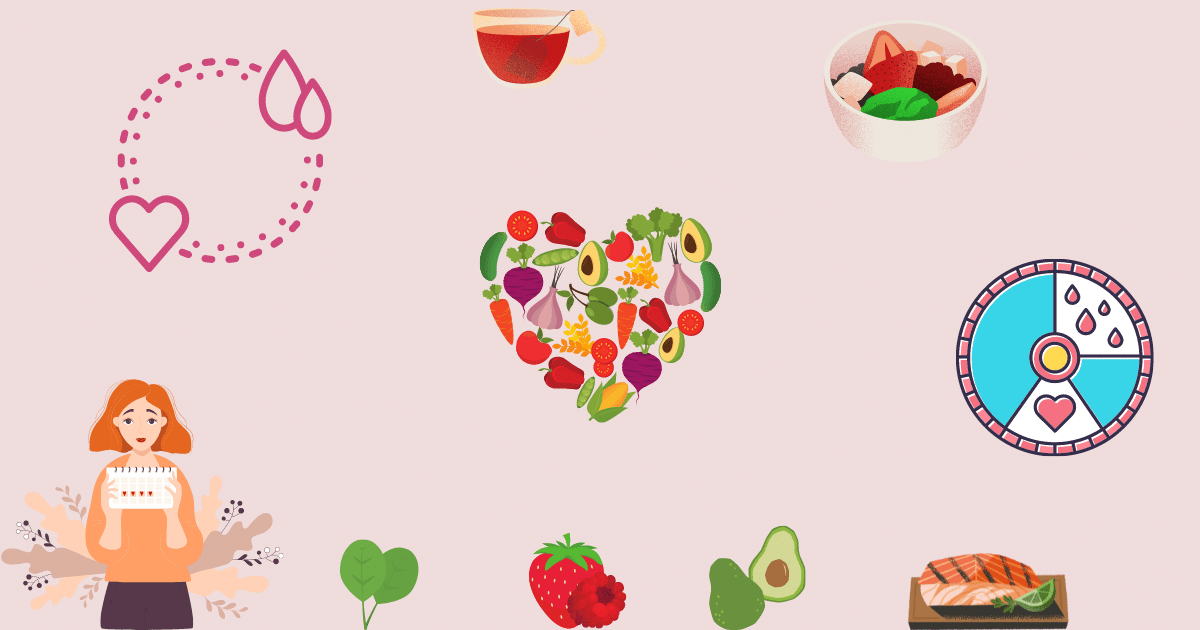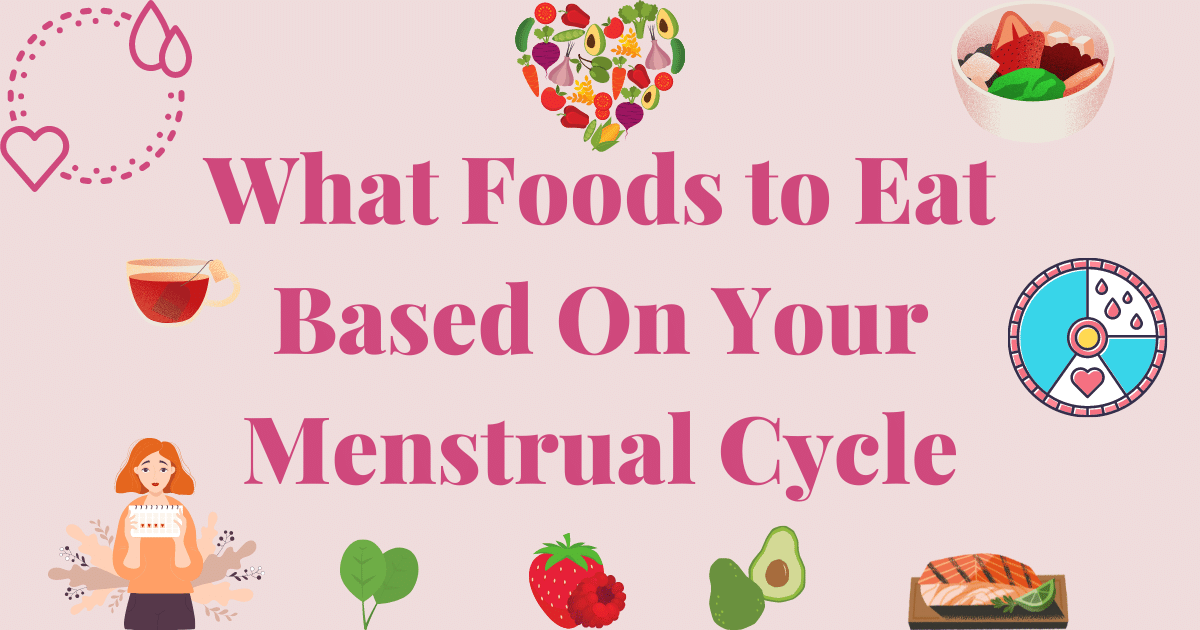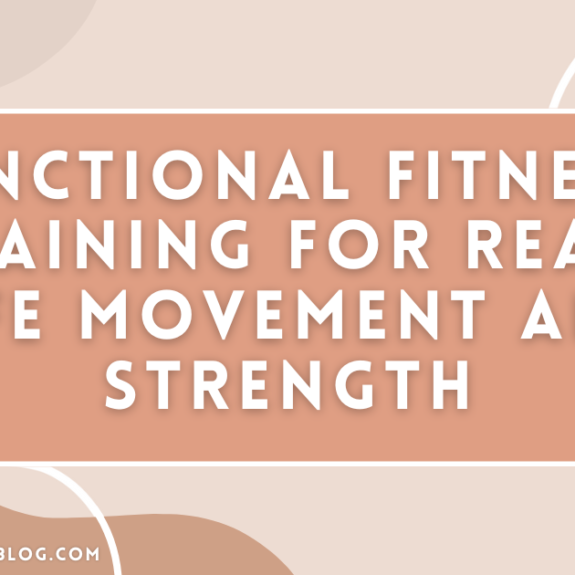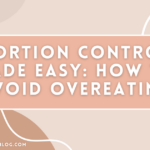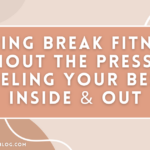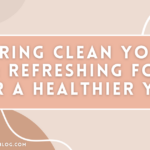Your menstrual cycle can be such a pain because it can make you feel terrible at times. Your hormones are raging because your body is going through so much in a span of 28 days. If you haven’t read how to plan out your workouts based on your menstrual cycle I would highly suggest doing that as well. I go over all the different phases in your cycle and explain what type of workouts go along with your body. In this post I will be explaining the different phases as well, but talking about what food helps your body function during its cycle. Keep reading to understand your body and how to keep it at its peak performance every month.
Menstruation Phase
Your cycle starts with the menstruation stage which lasts 4-6 days. Most women don’t feel at their best during menstruation because that’s when the lining of your uterus is shedding, which causes cramps, bloating, fatigue, and about a million other symptoms. Progesterone and estrogen are at their lowest, which is why you probably feel sluggish and lack motivation. This can make it really hard for you to find motivation or energy. The number 1 thing for your body during your menstruation phase is water. Women often experience headaches during their period and most of the time it’s related to dehydration. You might also feel more bloated during your period, but drinking enough water everyday allows your body to retain less water and reduce bloating. Fruit can be another great source of nutrition during your period. Watermelon and cucumbers are great fruits to keep on hand because they are full of water. If you find it difficult to drink enough water everyday, then adding in sources of food that are rich in water can help fill the gap. Fruit also has naturally sweet flavors. If you crave sweets during your period try to stay away from refined sugars because that will cause your glucose levels to rise and crash and definitely not help how your body feels. Fruit can be a healthy substitute because you’re still eating something sweet, but without refined or processed ingredients. During your period aim to eat food that’s anti-inflammatory and high in iron. Spinach is high in iron so this can be an easy addition to some of your meals. Berries and leafy greens contain antioxidants which can reduce inflammation. Drinking warm liquids such as tea or soup during your period can decrease period cramps. The menstruation phase is usually the most uncomfortable, so try your best to be mindful of the food that you’re giving your body. Give your body the nutrients that it needs to get through your period with ease and help the rest of your cycle flow seamlessly.
Follicular Phase
The next phase is the follicular phase which lasts 10-17 days. It’s actually concurrent with your menstruation phase, so for the period of time you’re on your period you’re also in your follicular phase. Your menstruation phase and your follicular phase start on the same day, but the follicular phase goes on longer. The hypothalamus tells your pituitary gland to release follicle stimulating hormones. Once your period ends, your ovaries are stimulated by the hormones to create follicles. This causes estrogen levels to rise, which increases energy. It’s common for women to be more dehydrated during their follicular phase because of the constantly changing hormones. Make sure to drink extra water during the follicular phase. Your body is creating follicles that eventually turn into eggs during this phase, so eat food that will assist follicle development. Omega 3 fatty acids are so beneficial to overall women’s health, but during the follicular phase they can help balance your hormones. Some omega 3 fatty acids include fish, eggs, avocados, nuts, and seeds. Estrogen is at an all time high during the follicular phase. Eating food that’s fermented can help metabolize estrogen effectively. Sauerkraut, brussel sprouts, and kimchi can be great additions to food you’re already eating. You probably feel your best towards the latter half of your follicular phase so take advantage of that. Create meals that make your taste buds and body happy.
Ovulation Phase
The ovulation phase starts right after the follicular phase and lasts 3-5 days. It’s the shortest phase within your cycle, but also the most important if you’re attempting to have kids. Ovulation is when your body releases a mature egg from the surface of your ovary to then travel along the fallopian tube to your uterus. At this point, the egg could fertilize if there’s sperm present, but if not then the egg will dissolve after about 24 hours. Your body is going through so much during ovulation so aim to eat whole foods. This means to eat foods that aren’t processed and contain tons of antioxidants and nutrients. Berries are a great option for antioxidants, especially raspberries and strawberries. Fiber rich foods will help detox your body from the hormones raging inside. Fiber rich vegetables include leafy greens, spinach, and brussel sprouts. The ovulation phase is crucial for women who are trying to have kids, so eating whole foods can help support this goal. Even if you aren’t trying to have kids your body is still producing all the hormones, so help your body out and give it the boost of nutrients it’s craving.
Luteal Phase
The luteal phase is the last phase of your cycle and the longest phase because it lasts about 2 weeks. The follicle that helped release the egg from your ovary turns into something called corpus luteum. This structure releases progesterone along with small amounts of estrogen. Your energy levels during the beginning of this phase will be similar to the latter half of your follicular phase, but they drop later along the luteal phase. The increased progesterone causes some people to feel more fatigued, so it all depends on how your body reacts to specific hormones. The increase in progesterone also makes your body temperature increase a bit. This function is made for people who have a fertilized egg because the increased body temperature allows for a more hospitable environment for the fetus. Estrogen and progesterone increase for a period of time, but decrease shortly after so eating food that will increase serotonin can help with how you feel. Increasing your magnesium, calcium, vitamin B, and fiber will help you curb sugar cravings. Your body will feel like it’s on an emotional rollercoaster because things are changing so fast preparing for your next menstrual cycle. Some great options include quinoa, leafy greens, sweet potato, pumpkin, spinach, and dark chocolate. The increase of progesterone in the beginning of the luteal phase has been known to slow digestion and cause some water retention. Make sure you’re intaking enough water everyday and consider eating more often but smaller meals. When your digestion is slowed down it can be beneficial to eat smaller meals and snacks in between to give your body a smaller amount to digest. Getting in protein during this phase can prepare your body for its next period. Some options include chickpeas, chicken, beans, and turkey. Drinking anti-inflammatory tea can help with bloating problems during the luteal phase. This phase is long, but your body is constantly releasing hormones and they’re increasing and decreasing, which makes it quite a complicated cycle.
The beauty of this cycle is that you get to do it all over again – fun right? You might be overwhelmed by all this information, but if you break it down it’s just 4 different phases that make up each month. The main goal is to eat as many whole foods as you can because those are the meals that will help your body have a smooth menstrual cycle. Give yourself grace during the days where you feel fatigued or emotional. Your body is so strong and beautiful for being able to go through all these processes, so appreciate your body for its hard work.
